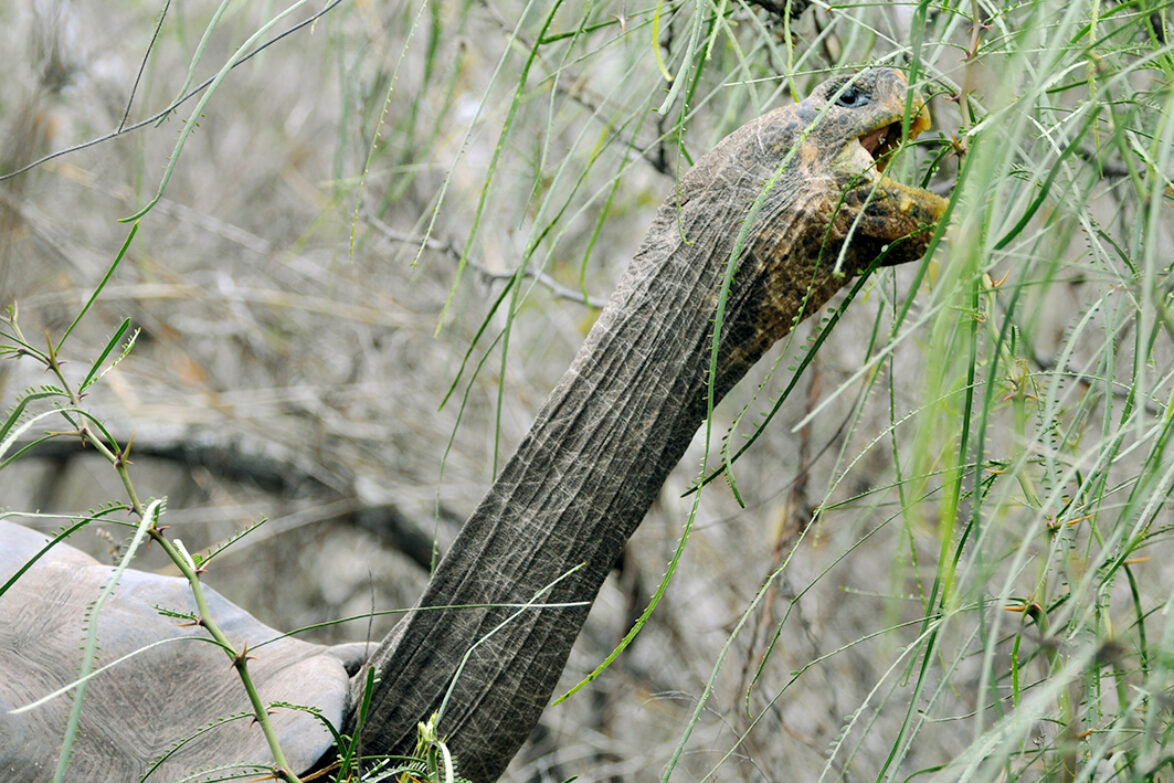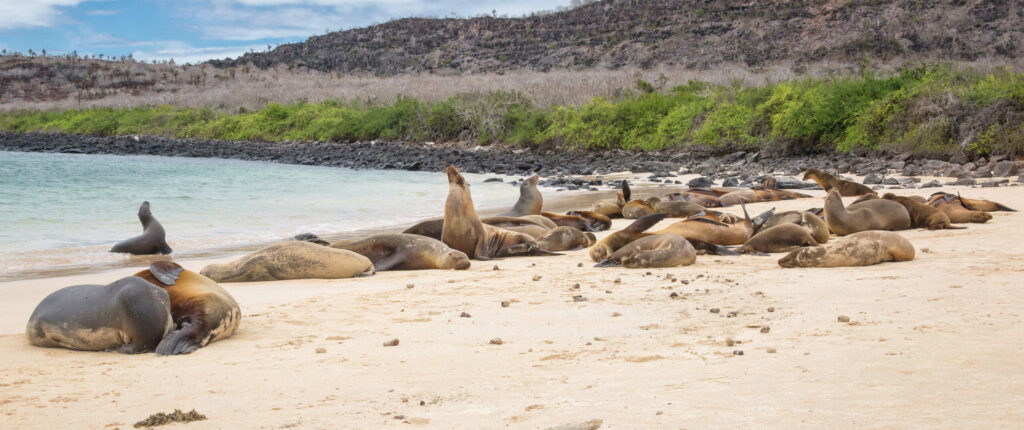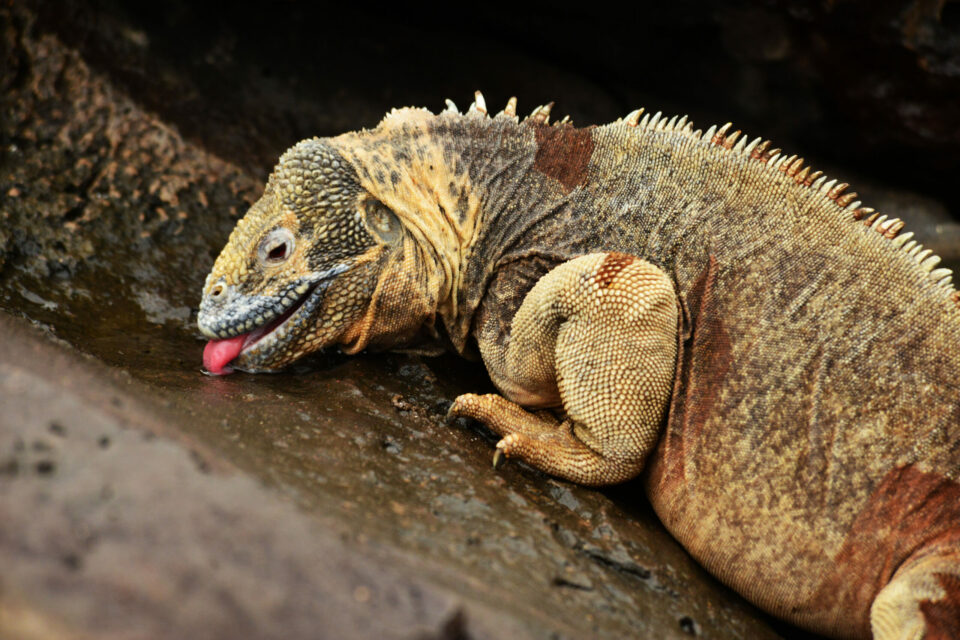
Island overview
Santa Fe is one of the smallest islands in Galapagos, covering an area of just 24 km².
It is located to the south-east of Santa Cruz in the centre of the Archipelago and is relatively flat in comparison to the other islands, with a maximum altitude of 259 metres. Santa Fe is one of the few islands that are not currently volcanically active.
The island is densely populated with Optunia echios, a large cactus, characterised by its large trunk, which is thought to be an adaption that protects the plants from iguanas and the now extinct Santa Fe giant tortoises. The landscape is also filled with Palo santo trees.
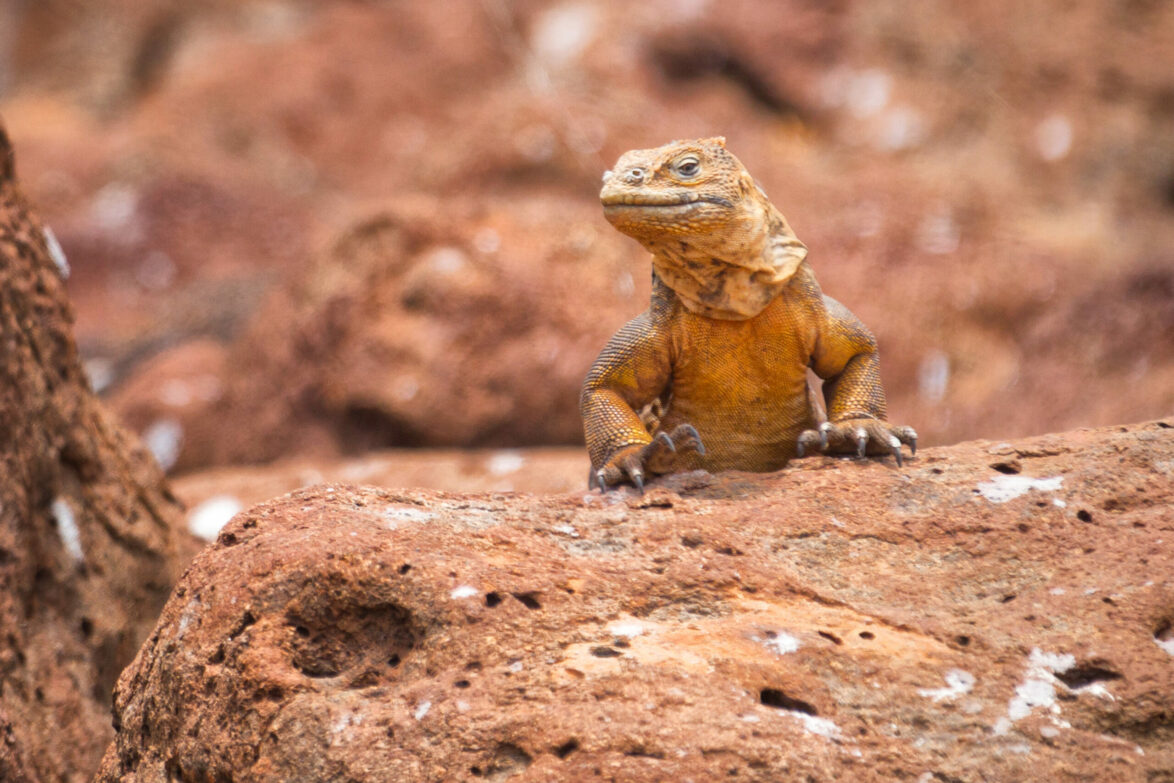
Santa Fe is home to an endemic species of land iguana and the endemic Santa Fe rice rat. There are many birds that live on the cliffs around the island, including swallow-tailed gulls, shearwater petrels, red-billed tropicbirds, mockingbirds, Darwin’s finches and Galapagos hawks.
There have never been any human settlers on the island, mainly due to the fact that there is no freshwater on the island. Tourists can visit Santa Fe, with two trails for walking. Visitors can also snorkel and dive in the waters that surround the island.
Wildlife highlights

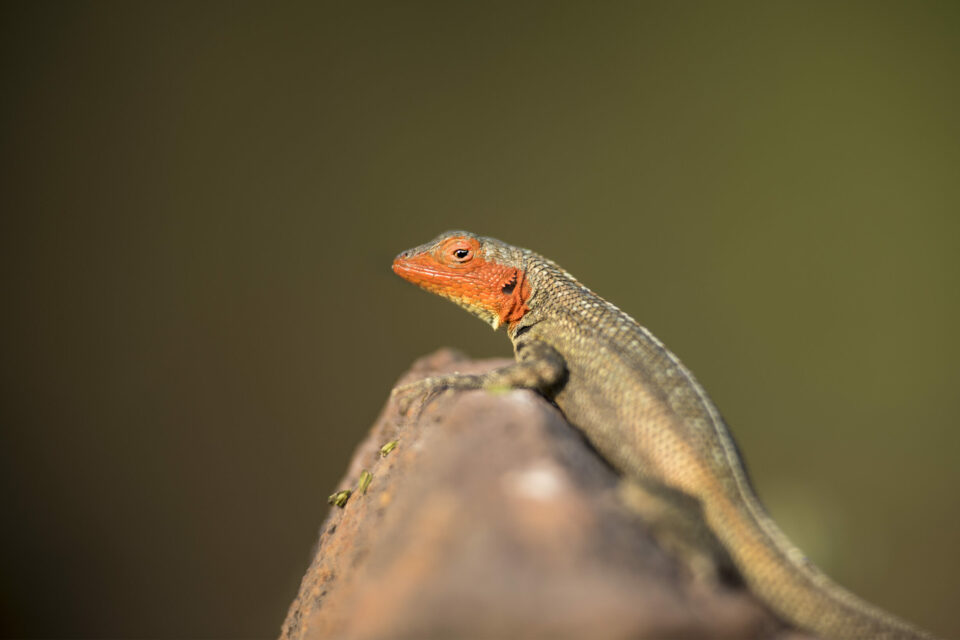
Lava lizard
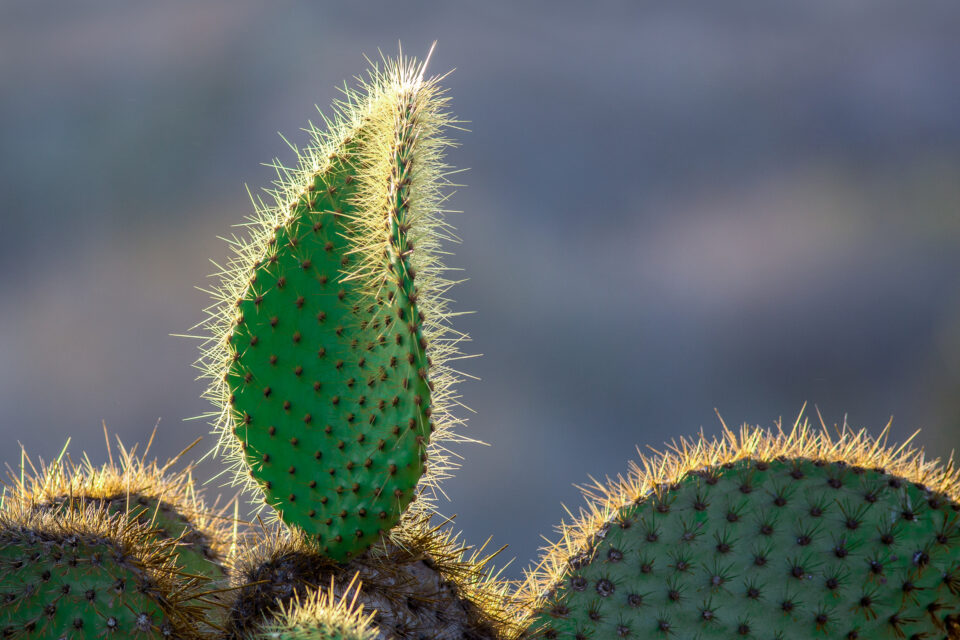
Prickly pear cactus

Galapagos hawk
Conservation challenges
The main aim of conservation on Santa Fe is the prevention of the introduction of invasive species to the island, such as the black rat, which could pose a threat to the endemic rice rats. Another concern is fire ants, which were discovered and eradicated from the island in 1975 and again in 1988. It is thought that giant tortoises were once present on the island of Santa Fe, so in 2012 a decision was made by the Galapagos National Park Directorate to reintroduce tortoises to the island. As Santa Fe giant tortoises are extinct, a genetically similar substitute species was used, the Española giant tortoise. In June 2015, 201 juvenile Española tortoises were released into the wild, with annual releases planned for the following ten years.
